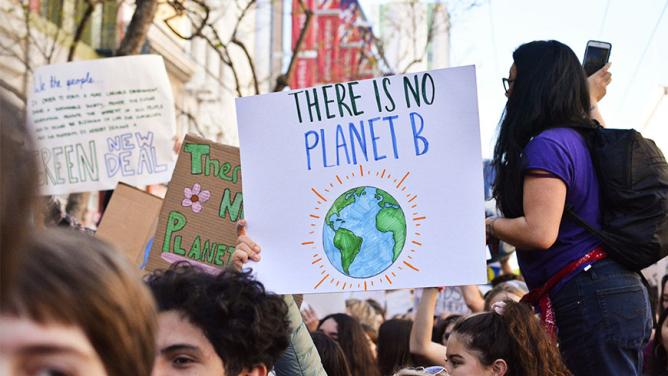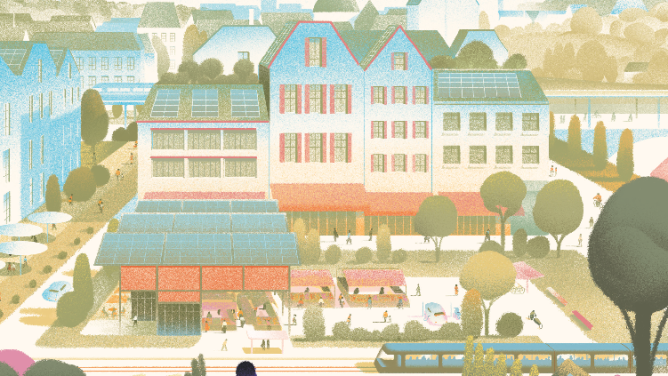For many years you have been defending a political and committed urbanism, a response urbanism, a solution urbanism, through a return to the commons, the sanctuary of unbuildable parts, or the concept of “positive global energy territory”. Under what conditions does urban planning make it possible to think about a sustainable future for cities and territories?
If by “sustainable” we mean “responding to the challenges of climate change”, then urban planning has a new challenge to meet: that of adaptation. So far, the focus has been on mitigating the effects of climate change. However, these mitigation strategies are mainly based on extra-territorial, regional, national or even international decisions. Urban planning can be a lever, but only at the margin. No, the real “raison d’être” of urban planning today is adaptation. This is a great challenge that requires urban planning to be thought of differently, as a vector of transformation and transition.
What exactly do we mean by “adaptation”?
The future is largely made up of the present, especially in our northern countries with low economic and demographic growth. 80% of the buildings of 2050 already exist today, but hardly any are adapted to tomorrow. Adapting means asking ourselves where we are today and what risks we are subject to. What will the hazards be tomorrow? What does the path from today’s known state to tomorrow’s assumed state look like? This is far more engaging than mitigation, which attempts to address today’s problems to bend global warming trajectories. It is a new role for urban planning, much more local, with highly territorialized responses, a common ground to be invented and shared to project ourselves into a more resilient future, better aware of its limits.
What does this change imply for the actors of urban planning?
Until now, urban players have been good futurists, but this change will force them to become futurists in order to better anticipate, work on trajectories and scenarios, understand the dynamics at work, settle into these dynamics and create the means of adaptation. This is a major change that requires integrating the data of a possible future into the transformation processes of the present. But this is in line with the way the IPCC works, for example. And the “future” is already making inroads into the present: look at the health crisis, or the climate disasters of the summer of 2022. The scenarios are already there.
Do we need to change the way we work?
That is obvious. And it is not a question of replacing mitigation with adaptation, but of coupling them, to respond to different timeframes. Obviously, everything must be done to mitigate as much as possible, to act on the curves to minimise the impacts; but at the same time, we must adapt our cities and territories, i.e. integrate a form of indeterminacy and hazards into the project, and therefore question our approach to ‘natural risks’, by integrating real-time evaluation methodologies. In order to work in a prospective manner, we must also look beyond the classic field of urban planning to rely on scientific work or other forms of scenarisation, by calling upon authors, “imaginers”. We need to integrate new actors into the project. This enlargement is one of the contributions of ecological engineering: a rapprochement between the worlds, an urbanism of “doing”, of action, which the 2022 Grand Prix de l’urbanisme wanted to recognise.
Does this push urban planning to take an interest in other fields?
Yes, because adaptation also takes place in the voids and it is absolutely necessary to take an interest in them. Voids are unthought of in planning because we only focus on the full, the built-up areas, the infrastructures. However, as soon as we start thinking about heat islands in cities, for example, we see that voids are an essential lever.
What are the priority issues that urban planning must address?
As we said, adaptation is the number one priority. But it’s a real change of gear to be made: a cultural, economic, political and social change. These are important choices that we must have the courage to make. For example, 25% of existing housing is already unsuitable for today’s conditions. And it is mainly the poorest who are the most vulnerable to climate change. Adapting buildings is therefore not just a question of urban planning: it is an extremely important political and social issue. Especially since there is also an economic relevance to be found in operations that must change their ambition: intervening on the existing, rehabilitating to adapt, is often more expensive than building new in a vacuum. But addressing the issues of artificialisation or the preservation of biodiversity adds elements to an economic equation that is not easy to solve. Choices will therefore have to be made, but it is only under these conditions that urban planning, which combines social, economic and environmental issues, will be able to find its raison d’être and contribute to the emergence of an adapted world.


